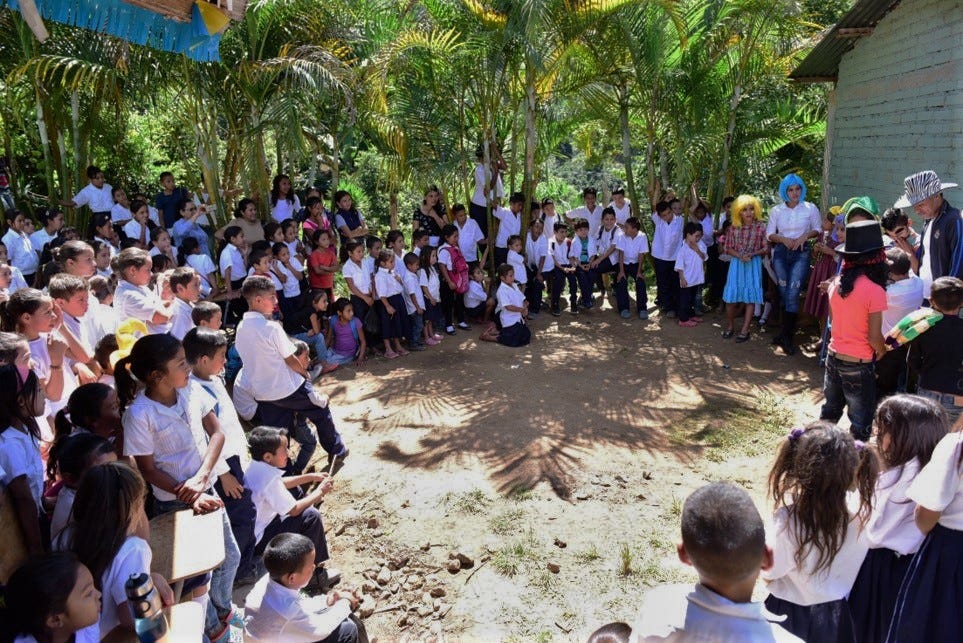Diary: Jorge Carrión, The World’s Most Important Libraries Aren’t the Ones You Think They Are
Helsinki’s Oodi Library was inaugurated in 2018 and welcomed as the library of the future by the world’s media. Although it possesses a collection of one hundred thousand books and offers areas for silent reading, the Oodi puts a greater emphasis on its training, conversing, and meeting areas: the cafeteria, projection room, family space, restaurant, and lecture theatres and spaces of various sizes intended for informal encounters. Its prime attraction is the Citizens’ Balcony, a large terrace with tables and chairs and spectacular views of the city. All those features of Helsinki’s Central Library were decided on democratically. As was the name, which means “ode.” Even the budget is allocated on a participatory basis.
Like lists of the world’s best bookshops, lists of libraries tend to mistake the spectacular for the excellent. Money can buy physical architecture, but it is harder to buy a structure of feeling. The best libraries in the world might not be housed in stunning buildings, have 3-D printers, or appear on the TV news, but they undoubtedly fulfill a purpose in their communities comparable to or better than these destination libraries. It is no accident that the clearest examples of this kind of institution are found in the Global South and are always less visible than the architectural wonders of the Global North, even though they are projects that use reading, study, and art to fight discrimination, violence, and poverty.
Colombia’s Mobile Public Library network—dubbed Mobile Libraries for Peace—uses modular structures that combine shelves filled with books and technological devices with reading and educational spaces. Twenty of these mobile libraries have been established in key parts of the country to encourage literacy as well as reconciliation for communities fractured by civil war.
In the rural municipality of Gallo, in Colombia’s north, “peace librarian” Víctor Solís Camacho established two initiatives, the “literary canoe” and the “travelling mule library” (muloteca), which bring books, games, technology, and craft materials to vulnerable, post-conflict communities. Statistics show that literacy rates increase and crime rates and conflict decrease in areas with mobile libraries; adults have a safe place to converse and children to imagine futures, like going to university, that until very recently were completely denied to them.
Give a Book Post Book Bag for the holidays!
A subscription to Book Post + a bag of books
In Honduras we can also find a model that is the opposite of emblematic buildings with budgets in the millions. Thanks to children’s library projects in the province of Lempira, initiated by the girl-centered NGO Plan International, two hundred travelling backpacks are currently in circulation, originating in twenty-three school libraries and two public libraries.
The experiment has been so successful and so many students have found alternatives to violence or failure at school that in 2019 the Honduras National Congress debated a proposal that would reproduce the experiment across the country. Meanwhile in Lempira five new libraries are being built and another ten have been approved.
In La biblioteca fantasma (“The Phantom Library”), a detailed journalistic account of the systematic looting of the National Library of Peru over a long period, David Hidalgo analyzed one of the obstacles there to a national project on the scale of Oodi: corruption. He also offers a valuable profile of the National Library’s excellent director, Ramón Mujica, who lost his quixotic battle to unmask the perpetrators and recover his library’s stolen books.
By singling out this bookish hero for praise, Hidalgo, investigative reporter and director of the online Peruvian newspaper OjoPúblico, reminds us of an indispensable truth: libraries are people, not buildings. From Alexandria onwards, libraries have no meaning without the commitment of dedicated caretakers and visionaries.
In Lempira, children write reviews of the hundreds of books they read, and proudly display lists of them. Last year they published a book of children’s stories—edited by poets Salvador Madrid and Albany Flores—entitled El árbol de los libros (The Book Tree). Several of the stories are about reading and books. One, called “Superreader,” is signed by eleven-year-old Ariani Alcántara. It ends on this note: “only read to be happy.”
Translated by Peter Bush
Jorge Carrión is the author of Bookshops: A Reader’s History (reviewed for Book Post by Anakana Schofield) and Against Amazon and Other Essays, from which this post is adapted. Thank you to the publisher and bookshop Biblioasis, in Windsor, Canada!
By the way, we mentioned the muletecas in our post last year about bookmobiles, and last week we had a review of Wade Davis’s new book about Colombia, Magadelena: River of Dreams, by Sarah Chayes.
Book Post is a by-subscription book review service, bringing book reviews by distinguished and engaging writers direct to your in-box, as well as free posts from time to time like this one. Subscribe to our book reviews and support our writers and our effort to grow a common reading culture across a fractured media landscape. Recent reviews: Joy Williams on J. M. Coetzee, Rebecca Chace on N. K. Jemisin, Cynthia Zarin on Elena Ferrante.
Malaprop’s Bookstore/Cafe, in Asheville, North Carolina, is Book Post’s Autumn 2020 partner bookstore! We support independent bookselling by linking to independent bookstores and bringing you news of local book life as it happens in their aisles. We’ll send a free three-month subscription to any reader who spends more than $100 there during our partnership. Send your receipt to info@bookpostusa.com.
Follow us: Facebook, Twitter, Instagram
Give a Book Post Book Bag for the holidays!
If you liked this piece, please share and tell the author with a “like”




